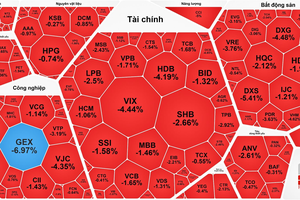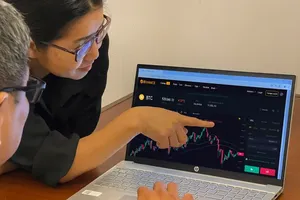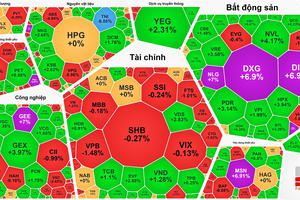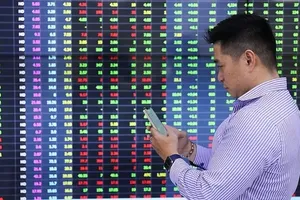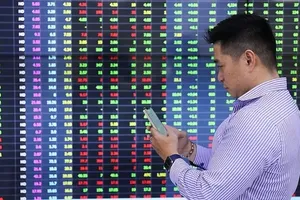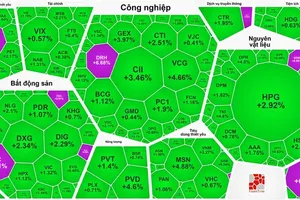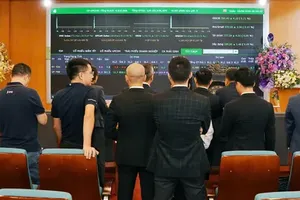
Spike in new accounts
The phenomenon of liquidity explosion often occurs during the bull-market period, when the lure of profits attracts a new batch of investors who pour in large amounts of cash. This phenomenon occurred during the 2006 to 2007 growth cycle, but now there are very few people who remember that phase. The most recent bull market cycle of 2020 to 2021 is much clearer in the minds of investors. Typically, the number of new investors flocking to the stock market has spiked, with a record number of new accounts now being opened.
Along with this, the daily transaction volume has also skyrocketed, leading to order congestion as in the period from January to March 2021. The bottleneck at that time was determined at HoSE at the transaction level of VND14,000 to VND 15,000 bln per day. By the beginning of April 2021, the HoSE system had improved 25% of capacity and increased liquidity to VND20,000 to VND23,000 bln per day. By the beginning of July 2021, the FPT alternative trading system came into operation and HoSE began to witness sessions with a total trading value of VND35,000 to VND38,000 bln per day.
Those were the glorious days of stock market liquidity and a stark contrast to the current trading volume. In September 2022, the average total transaction volume of HoSE was just over VND13,000 bln per day. In other words, market liquidity has returned to the point before HoSE congested orders. Looking at the month, the liquidity record on this exchange was set in November 2021 with VND676,942 bln, while in September 2022 it dropped to VND214,862 bln, equivalent to just over 31% of the peak.
It is normal for daily up down in liquidity while trading, but such a huge drop is unusual. This causes domestic investors to reduce transactions, and foreign investors also lose their enthusiasm. Specifically, the record of buying transactions of this block was also set in November 2021 with VND44,829 bln, which included shares and fund certificates, but in September, the disbursement dropped below VND20,000 bln, which was also more than halve.
Daily cash flow
Liquidity flow on a daily basis on the stock market is made up of transactions by many different types of investors, from organizations to individuals. Because it is an investment channel like many other investment channels such as real estate, gold, foreign currency, digital currency, or commodities, cash flow has a circulation process of moving in and out.
Therefore, a primary reason for the decrease in liquidity is the small profit opportunity, so it is not advisable for investors to allocate a lot of capital into the securities channel. This is very reasonable because liquidity has been confirmed to peak at the time when stock market growth peaks, and in the current downtrend, liquidity also decreases. The number of new investor accounts recorded a shocking drop in July and August, from the peak of more than 476,000 domestic individual accounts in May 2022 to less than 153,000 accounts in August 2022.
For foreign investors, this capital inflow is expected to decline under the pressure of strong interest rate hikes by central banks globally. However, capital withdrawal is not very clear. This is because the US Federal Reserve (FED) started the process of raising interest rates from mid-March 2022, and by the end of September 2022 there have been five interest rate hikes. In the last seven months, there were long periods when this capital flow was net sold but the main line was still net buying.
Specifically, in the general statistics of all transactions of foreign investors on HoSE, the net buying level from March to September 2022 was still plus VND2,767 bln. This data shows that although there may be a phenomenon of capital withdrawal from one fund to another, the overall foreign capital flow was not chipped. Therefore, the decrease in transactions in this group of investors is more related to the investment strategy in each market period than to the withdrawal of capital.
The fact is that from the end of 2020 until now, the proportion of foreign investor purchases in the market has been getting smaller and smaller. From an average of over 13.3% of total monthly transaction value at HoSE in 2020, it has now decreased to 7.8% in the first nine months of 2022. Therefore, the decrease in market liquidity must have come from domestic investors.
The fact that cash flow naturally declines according to the ups and downs of the market, there are many other reasons that can affect capital flow, but which are more difficult to quantify. For example, in the case of price manipulation by Trinh Van Quyet and Do Thanh Nhan, hundreds of accounts were set up for transactions with thousands of billions of dongs borrowed to create virtual transactions and make up stock prices. These are the two big investors who were exposed, but how many other big players have retreated into the dark and stopped functioning is a mystery.
Yet another factor that also strongly affects the capital flow in the market is the massive issuance of additional listings by listed companies who want to take advantage of the period when the stock market is seen to be on the rise. Data from HoSE shows that in the first nine months of this year, more than 14.6 billion additional shares were listed. Most of these were additional issuances for existing shareholders, which means that investors have to put money in to buy back. This huge amount of money is then transferred from investment accounts into corporate capital, which then reduces the purchasing power in the markets.


